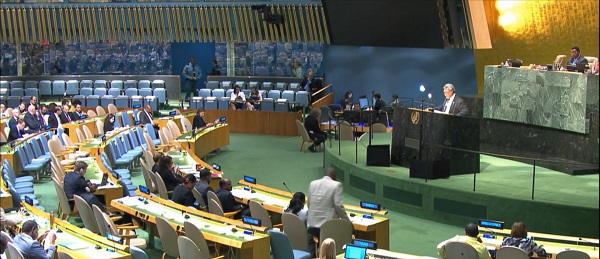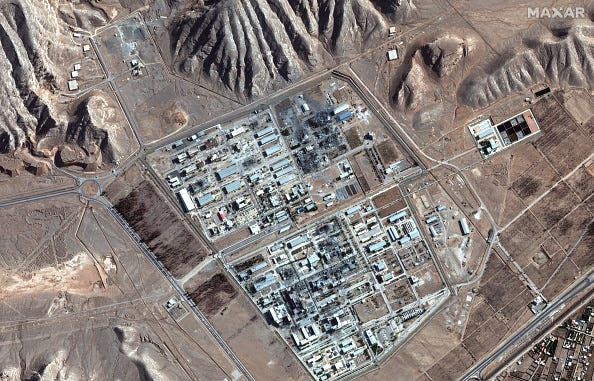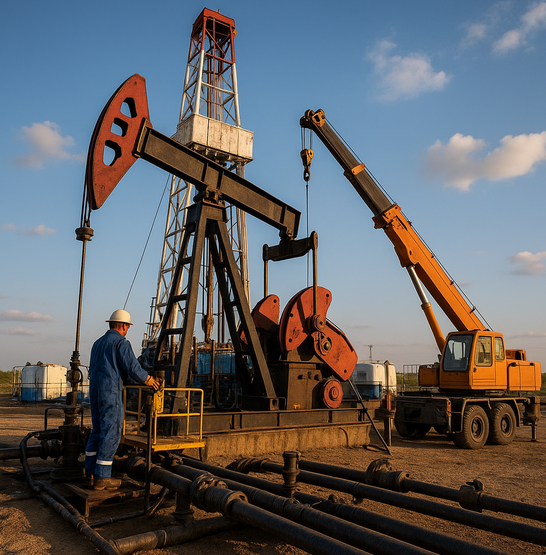Economy
Refuting the ancient myth of overpopulation

From LifeSiteNews
By Aidan Grogan
Recent findings decimate the Malthusian outlook and render advocacy of population control not only ill-informed and inexcusable, but frankly anti-human.
(American Institute for Economic Research) — Prince Philip once said, “In the event that I am reincarnated, I would like to return as a deadly virus, to contribute something to solving overpopulation.” The late Duke of Edinburgh passed away in 2021, but the hysterical sentiment he expressed about overpopulation lives on.
A YouGov poll found that overpopulation concerns are widespread among adults across the planet, with nearly half of sampled Americans believing that the world’s population is too high. This view is shared by 76 percent of Hungarians and 69 percent of Indians, according to the poll.
Overpopulation and ecological disasters have been the themes of numerous blockbuster movies, including ZPD (1972), Soylent Green (1973), Idiocracy (2006), and Elysium (2013). Mainstream news outlets have repeatedly promoted the apocalyptic idea to the public, with headlines such as “Science proves kids are bad for Earth. Morality suggests we stop having them” (NBC News). The progressive magazine Fast Company released a video titled “Why having kids is the worst thing you can do for the planet.”
The theory of overpopulation, and the collectivist idea that human reproduction must be limited, even by force, is nothing new. It first appeared in the ancient Mesopotamian Atrahasis epic, where the gods control the human population by infertility, infanticide, and appointing a priest class to limit childbirth.
Plato and Aristotle both endorsed a form of proto-eugenics and population control. In The Republic, Socrates and Glaucon conclude that an owner controlling the breeding of his dogs and birds to prevent their degeneration should also apply to the human species. The guardians would be tasked with deciding who is allowed to reproduce and who should be prohibited from having offspring. In the Politics, Aristotle advocated for state-mandated abortions of children with deformities or in cases where couples are having too many children and contributing to overpopulation.
The decline of Greek civilization in the second century BCE was not a consequence of an excess number of births, but precisely the opposite. Polybius attributed the downfall of Greece in his time to a decay of population which emptied out the cities and resulted in a failure of productiveness. It was not warfare and pestilence which reduced the birth rate, but decadence. The idle men of Greece, according to Polybius, were more interested in money and pleasure than marriage and child-rearing.
Two millennia later, English economist Thomas Malthus resurrected the old Mesopotamian myth with his 1798 An Essay on the Principle of Population. Malthus claimed that population growth increases geometrically while food production increases only arithmetically, which he believed would lead to widespread famine if the rapid propagation of humanity were not obstructed.
He identified two checks, one natural and one human-induced, which could keep population growth limited: preventive checks, such as delayed marriage or sexual abstinence, that stabilize the birth rate and evade the natural calamities of positive checks – famines, pestilences, earthquakes, floods, etc. – which represent nature’s striking back against the pressures of unhindered population growth.
Malthus preferred the former, but if unsuccessful, supported appalling and brutal depopulation measures. He suggested policies to “make the streets narrower, crowd more people into the houses, and court the return of the plague.” He also recommended banning “specific remedies for ravaging diseases.”
In 1859, Charles Darwin’s On the Origin of Species argued that species evolved gradually from a common ancestor. His follow-up The Descent of Man posited that humans descended from their ape-like past through a process of sexual selection that favored the stronger, more intelligent genes. Darwin said that his evolutionary theory “is the doctrine of Malthus applied with manifold force to the whole animal and vegetable kingdoms.”
READ: U.S. birth rate hit record low last year, signaling surge in childlessness
Darwin’s cousin, Francis Galton, used Darwin’s theory of evolution to develop eugenics – a pseudo-scientific theory that the human race could be improved through controlled breeding.
Subsidized by some of the largest philanthropic organizations in the United States, including the Rockefeller Foundation and the Carnegie Institution, eugenics was embraced by many leaders of the American progressive movement, who favored involuntary sterilization and immigration restriction.
Margaret Sanger, the founder of the American Birth Control League – later to be renamed Planned Parenthood – denigrated charity and referred to the poor as “human waste.” She and her companions considered several names for their movement, such as “neo-Malthusianism,” “population control,” and “race control,” before finally settling on “birth control.”
The eugenicists’ fervent collectivism and disregard for America’s founding principles affirming the inherent dignity and rights of every individual were best expressed through Madison Grant’s The Passing of the Great Race, in which he wrote:
Mistaken regard for what are believed to be divine laws and a sentimental belief in the sanctity of human life tend to prevent both the elimination of defective infants and the sterilization of such adults as are themselves of no value to the community. The laws of nature require the obliteration of the unfit and human life is valuable only when it is of use to the community or race.
Eugenics laws were implemented across the United States beginning with Indiana in 1907. By the Second World War, around 60,000 Americans had undergone sterilization.
In Britain, eugenics was enthusiastically championed by socialists such as John Maynard Keynes, George Bernard Shaw, and H.G. Wells. Keynes wrote an outline for a book called Prolegomena to a New Socialism, in which he listed “eugenics, population” as “chief preoccupations of the state.”
Eugenics – at least under that official title – began to fade after the harsh realities of the Holocaust were unveiled, but the Malthusian presuppositions which undergirded their movement never vanished.
Stanford biologist Paul R. Ehrlich’s 1968 book The Population Bomb re-invigorated the Malthusian craze for a new generation, predicting imminent worldwide famines and other catastrophes due to overpopulation. In the prologue, he wrote: “We can no longer afford merely to treat the symptom of the cancer of population growth; the cancer itself must be cut out. Population control is the only answer.”
That same year, a group of European scientists concerned about the future of the planet founded an NGO called the Club of Rome. Their first major publication, Limits to Growth (1972), attacked the pursuit of material gain and continuous economic expansion. Two of the Club of Rome’s most prominent members openly declared in their 1991 book The First Global Revolution that humanity is the real enemy:
In searching for a common enemy against whom we can unite, we came up with the idea that pollution, the threat of global warming, water shortages, famine and the like, would fit the bill… All these dangers are caused by human intervention in natural processes, and it is only through changed attitudes and behaviour that they can be overcome. The real enemy then is humanity itself.
At the time of the publication of Ehrlich’s doomsday book and the Club of Rome’s founding, the world’s population stood at 3.6 billion, and nearly half of people worldwide were living in poverty. Over the next five decades, the global population more than doubled to 7.7 billion, yet fewer than 9 percent of people remain in poverty today, and famines have virtually disappeared.
Ehrlich’s hypothesis was rejected by economist Julian Simon in his 1981 book The Ultimate Resource, in which he argued that a rising number of “skilled, spirited, and hopeful people” results in more ingenuity, less scarcity, and lower costs in the long run. In other words, the larger the human population, the greater the collective brain power our species may wield to innovate, overcome problems, and benefit everyone through increased abundance. The ultimate resource, according to Simon, is people.
Recent research from Gale L. Pooley and Marian L. Tupy has vindicated Simon’s optimistic view. For every one-percent increase in population, commodity prices tend to fall by around one percent. In the years 1980-2017, the planet’s resources became 380 percent more abundant.
These findings decimate the Malthusian outlook and render advocacy of population control not only ill-informed and inexcusable, but frankly anti-human. The ecological cataclysms predicted by Ehrlich and the Club of Rome haven’t come true. Nature hasn’t struck back against a rapidly increasing population in any manner anticipated by Malthus.
As former U.S. Department of Energy undersecretary for science Steven E. Koonin pointed out in his 2021 book Unsettled, U.N. and U.S. government climate data show the following: 1) humans have had no detectable impact on hurricanes over the past century, 2) Greenland’s ice sheet isn’t shrinking any more rapidly today than it was 80 years ago, and 3) the net economic impact of human-induced climate change will be minimal through at least the end of this century.
Pooley and Tupy, however, caution that population growth alone is not enough to generate what they term “superabundance,” as they titled their recent book. The innovation required to sustain an ever-increasing world population demands economic and personal freedom. Collectivism and central planning will only restrict the human ingenuity, ideas, and enterprises that will pave the way toward a brighter, more prosperous future.
It is certainly time to lay to rest Malthusian theory and the overpopulation hysteria it has aroused. We must avoid the cynical outlook on humanity which regards us as net destroyers, a viral pathogen ravaging the earth, and instead opt for the more positive – and true – vision of human beings and human destiny. We are net creators.
Reprinted with permission from the American Institute for Economic Research.
Business
Trump confirms 35% tariff on Canada, warns more could come

Quick Hit:
President Trump on Thursday confirmed a sweeping new 35% tariff on Canadian imports starting August 1, citing Canada’s failure to curb fentanyl trafficking and retaliatory trade actions.
Key Details:
- In a letter to Canadian Prime Minister Mark Carney, Trump said the new 35% levy is in response to Canada’s “financial retaliation” and its inability to stop fentanyl from reaching the U.S.
- Trump emphasized that Canadian businesses that relocate manufacturing to the U.S. will be exempt and promised expedited approvals for such moves.
- The administration has already notified 23 countries of impending tariffs following the expiration of a 90-day negotiation window under Trump’s “Liberation Day” trade policy.
Diving Deeper:
President Trump escalated his tariff strategy on Thursday, formally announcing a 35% duty on all Canadian imports effective August 1. The move follows what Trump described as a breakdown in trade cooperation and a failure by Canada to address its role in the U.S. fentanyl crisis.
“It is a Great Honor for me to send you this letter in that it demonstrates the strength and commitment of our Trading Relationship,” Trump wrote to Prime Minister Mark Carney. He added that the tariff response comes after Canada “financially retaliated” against the U.S. rather than working to resolve the flow of fentanyl across the northern border.
Trump’s letter made clear the tariff will apply broadly, separate from any existing sector-specific levies, and included a warning that “goods transshipped to evade this higher Tariff will be subject to that higher Tariff.” The president also hinted that further retaliation from Canada could push rates even higher.
However, Trump left the door open for possible revisions. “If Canada works with me to stop the flow of Fentanyl, we will, perhaps, consider an adjustment to this letter,” he said, adding that tariffs “may be modified, upward or downward, depending on our relationship.”
Canadian companies that move operations to the U.S. would be exempt, Trump said, noting his administration “will do everything possible to get approvals quickly, professionally, and routinely — In other words, in a matter of weeks.”
The U.S. traded over $762 billion in goods with Canada in 2024, with a trade deficit of $63.3 billion, a figure Trump called a “major threat” to both the economy and national security.
Speaking with NBC News on Thursday, Trump suggested even broader tariff hikes are coming, floating the idea of a 15% or 20% blanket rate on all imports. “We’re just going to say all of the remaining countries are going to pay,” he told Meet the Press moderator Kristen Welker, adding that “the tariffs have been very well-received” and noting that the stock market had hit new highs that day.
The Canadian announcement is part of a broader global tariff rollout. In recent days, Trump has notified at least 23 countries of new levies and revealed a separate 50% tariff on copper imports.
“Not everybody has to get a letter,” Trump said when asked if other leaders would be formally notified. “You know that. We’re just setting our tariffs.”
Business
UN’s ‘Plastics Treaty’ Sports A Junk Science Wrapper


From the Daily Caller News Foundation
By Craig Rucker
According to a study in Science Advances, over 90% of ocean plastic comes from just 10 rivers, eight of which are in Asia. The United States, by contrast, contributes less than 1%. Yet Pew treats all nations as equally responsible, promoting one-size-fits-all policies that fail to address the real source of the issue.
Just as people were beginning to breathe a sigh of relief thanks to the Trump administration’s rollback of onerous climate policies, the United Nations is set to finalize a legally binding Global Plastics Treaty by the end of the year that will impose new regulations, and, ultimately higher costs, on one of the world’s most widely used products.
Plastics – derived from petroleum – are found in everything from water bottles, tea bags, and food packaging to syringes, IV tubes, prosthetics, and underground water pipes. In justifying the goal of its treaty to regulate “the entire life cycle of plastic – from upstream production to downstream waste,” the U.N. has put a bull’s eye on plastic waste. “An estimated 18 to 20 percent of global plastic waste ends up in the ocean,” the UN says.
As delegates from over 170 countries prepare for the final round of negotiations in Geneva next month, debate is intensifying over the future of plastic production, regulation, and innovation. With proposals ranging from sweeping bans on single-use plastics to caps on virgin plastic output, policymakers are increasingly citing the 2020 Pew Charitable Trusts report, Breaking the Plastic Wave, as one of the primary justifications.
But many of the dire warnings made in this report, if scrutinized, ring as hollow as an empty PET soda bottle. Indeed, a closer look reveals Pew’s report is less a roadmap to progress than a glossy piece of junk science propaganda—built on false assumptions and misguided solutions.
Pew’s core claim is dire: without urgent global action, plastic entering the oceans will triple by 2040. But this alarmist forecast glosses over a fundamental fact—plastic pollution is not a global problem in equal measure. According to a study in Science Advances, over 90% of ocean plastic comes from just 10 rivers, eight of which are in Asia. The United States, by contrast, contributes less than 1%. Yet Pew treats all nations as equally responsible, promoting one-size-fits-all policies that fail to address the real source of the issue.
This blind spot has serious consequences. Pew’s solutions—cutting plastic production, phasing out single-use items, and implementing rigid global regulations—miss the mark entirely. Banning straws in the U.S. or taxing packaging in Europe won’t stop waste from being dumped into rivers in countries with little or no waste infrastructure. Policies targeting Western consumption don’t solve the problem—they simply shift it or, worse, stifle useful innovation.
The real tragedy isn’t plastic itself, but the mismanagement of plastic waste—and the regulatory stranglehold that blocks better solutions. In many countries, recycling is a government-run monopoly with little incentive to innovate. Meanwhile, private-sector entrepreneurs working on advanced recycling, biodegradable materials, and AI-powered sorting systems face burdensome red tape and market distortion.
Pew pays lip service to innovation but ultimately favors centralized planning and control. That’s a mistake. Time and again, it’s been technology—not top-down mandates—that has delivered environmental breakthroughs.
What the world needs is not another top-down, bureaucratic report like Pew’s, but an open dialogue among experts, entrepreneurs, and the public where new ideas can flourish. Imagine small-scale pyrolysis units that convert waste into fuel in remote villages, or decentralized recycling centers that empower informal waste collectors. These ideas are already in development—but they’re being sidelined by policymakers fixated on bans and quotas.
Worse still, efforts to demonize plastic often ignore its benefits. Plastic is lightweight, durable, and often more environmentally efficient than alternatives like glass or aluminum. The problem isn’t the material—it’s how it has been managed after its use. That’s a “systems” failure, not a material flaw.
Breaking the Plastic Wave champions a top-down, bureaucratic vision that limits choice, discourages private innovation, and rewards entrenched interests under the guise of environmentalism. Many of the groups calling for bans are also lobbying for subsidies and regulatory frameworks that benefit their own agendas—while pushing out disruptive newcomers.
With the UN expected to finalize the treaty by early 2026, nations will have to face the question of ratification. Even if the Trump White House refuses to sign the treaty – which is likely – ordinary Americans could still feel the sting of this ill-advised scheme. Manufacturers of life-saving plastic medical devices, for example, are part of a network of global suppliers. Companies located in countries that ratify the treaty will have no choice but to pass the higher costs along, and Americans will not be spared.
Ultimately, the marketplace of ideas—not the offices of policy NGOs—will deliver the solutions we need. It’s time to break the wave of junk science—not ride it.
Craig Rucker is president of the Committee For A Constructive Tomorrow (www.CFACT.org).
-

 Business2 days ago
Business2 days agoCarney government should recognize that private sector drives Canada’s economy
-

 Alberta1 day ago
Alberta1 day agoAlberta school boards required to meet new standards for school library materials with regard to sexual content
-

 Business2 days ago
Business2 days agoCannabis Legalization Is Starting to Look Like a Really Dumb Idea
-

 Bruce Dowbiggin2 days ago
Bruce Dowbiggin2 days agoThe Covid 19 Disaster: When Do We Get The Apologies?
-

 Alberta1 day ago
Alberta1 day agoFourteen regional advisory councils will shape health care planning and delivery in Alberta
-

 Environment1 day ago
Environment1 day agoEPA releases report on chemtrails, climate manipulation
-

 Crime1 day ago
Crime1 day agoSweeping Boston Indictment Points to Vast Chinese Narco-Smuggling and Illegal Alien Labor Plot via Mexican Border
-

 Media2 days ago
Media2 days agoCBC journalist quits, accuses outlet of anti-Conservative bias and censorship






